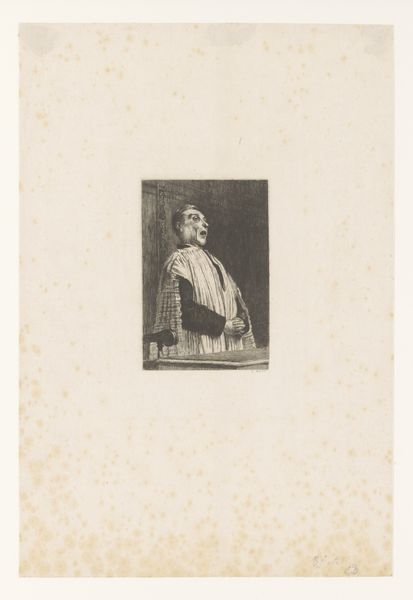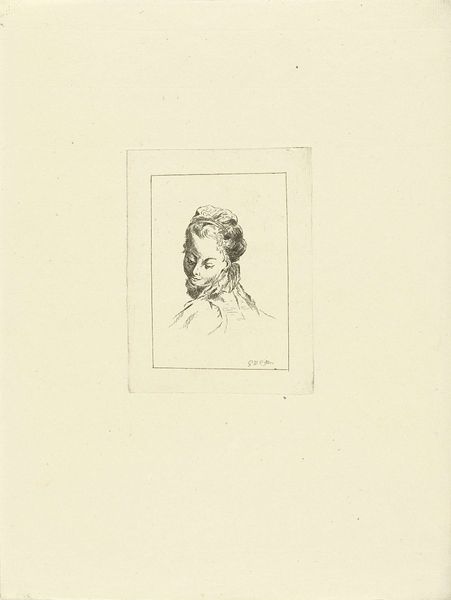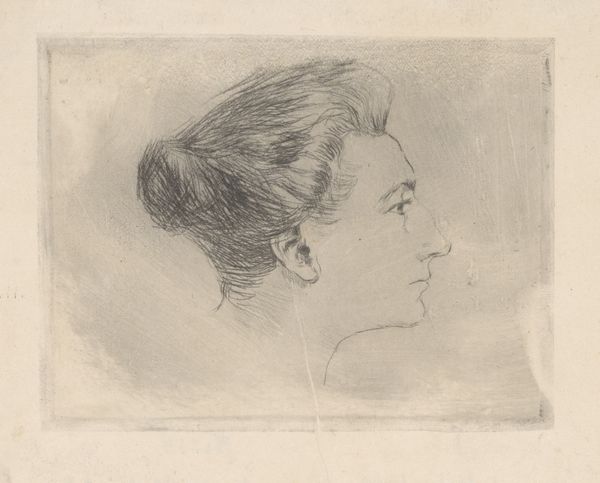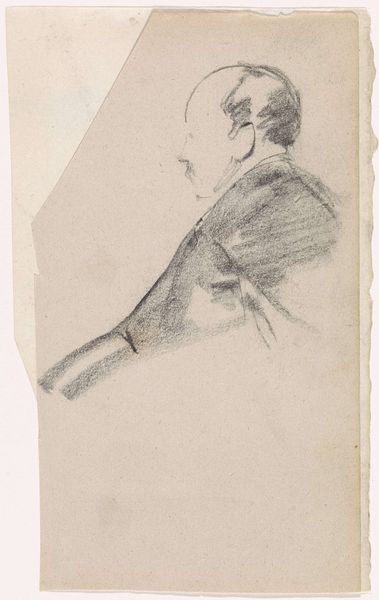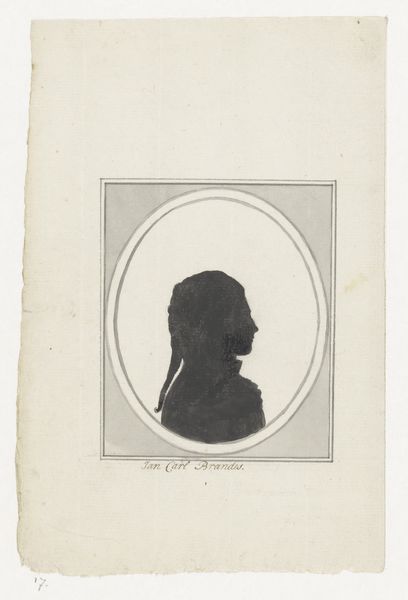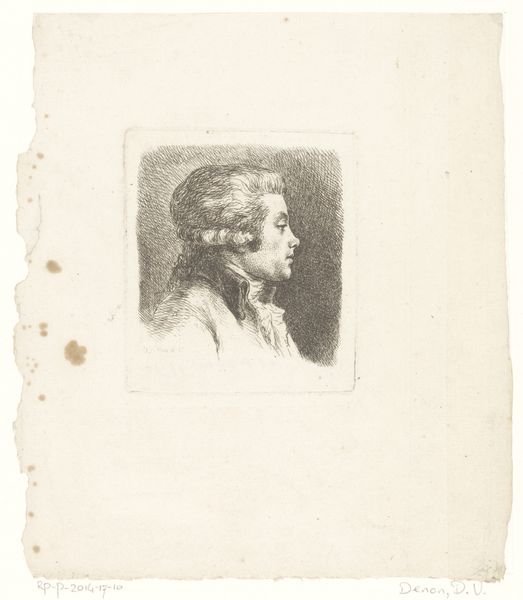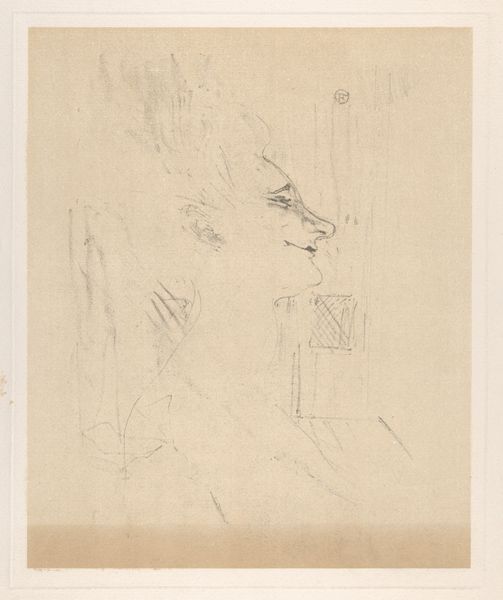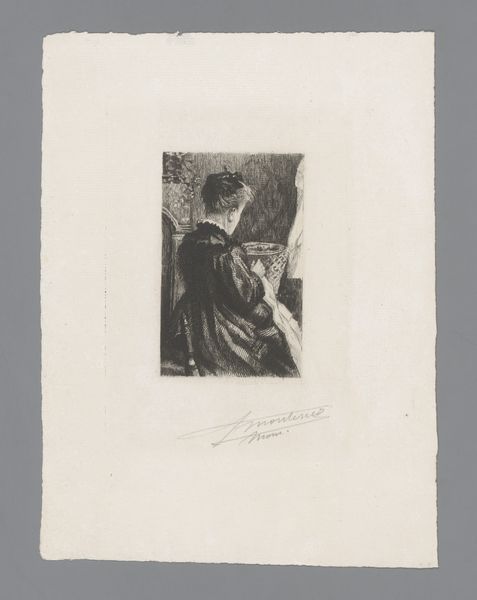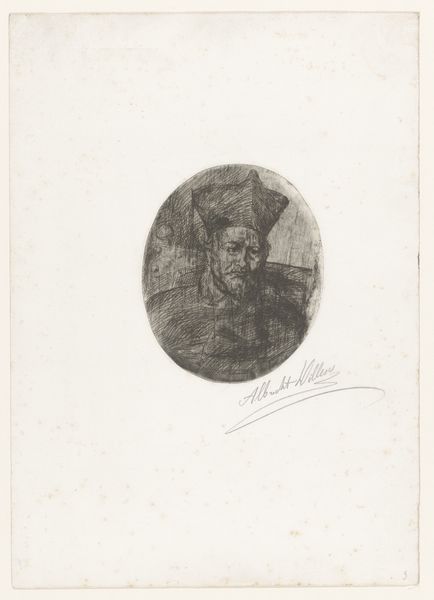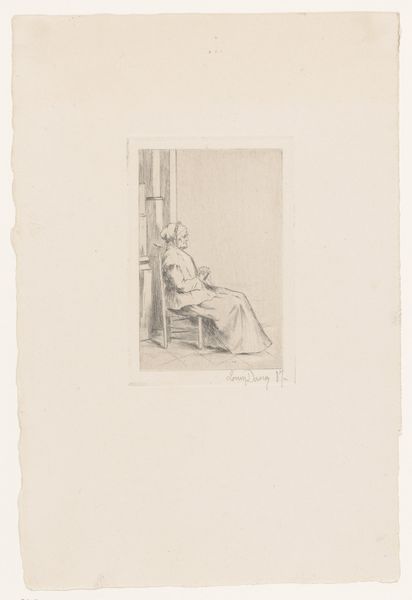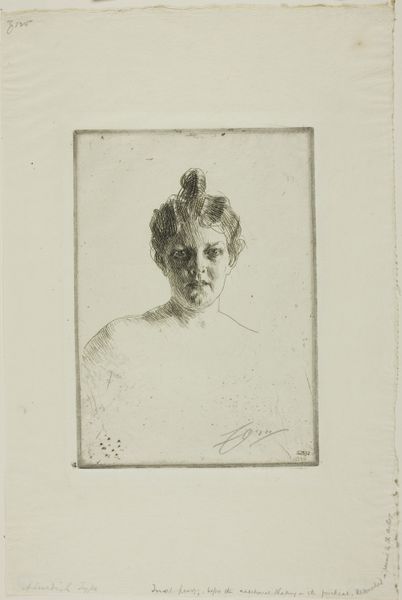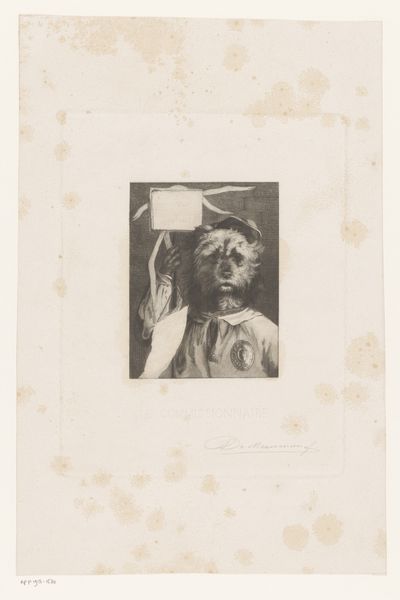
print, etching
#
portrait
#
pencil drawn
# print
#
etching
#
pencil sketch
#
figuration
#
pencil drawing
#
history-painting
Dimensions: height 126 mm, width 101 mm
Copyright: Rijks Museum: Open Domain
Christiaan Wilhelmus Moorrees made this study sheet with the bust of a man using etching, a printmaking technique that democratized image production in its day. The subtle tonal gradations and fine lines you see here are achieved by drawing into a wax-coated metal plate with a needle, then submerging it in acid. The acid bites away the exposed metal, creating incised lines that hold ink. The plate is then wiped clean, leaving ink only in the etched lines, and printed onto paper. The character of the etched line varies with pressure and speed, giving the image a delicate, almost sketch-like quality. Etching allowed for multiple, relatively inexpensive reproductions, making art more accessible and contributing to a burgeoning visual culture. The labor-intensive process contrasts sharply with the ease of distribution, raising questions about artistic value and the changing landscape of art production in the 19th century. By considering the materials and making of this print, we see how traditional craft techniques intersect with emerging industrial processes, blurring the boundaries between art, production, and consumption.
Comments
No comments
Be the first to comment and join the conversation on the ultimate creative platform.

